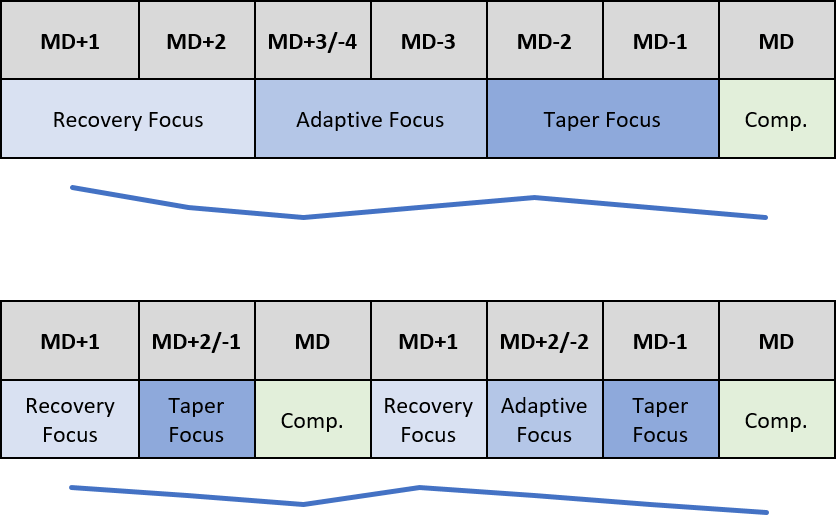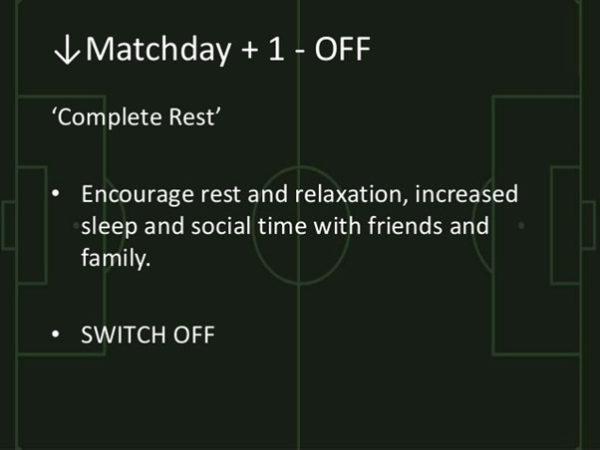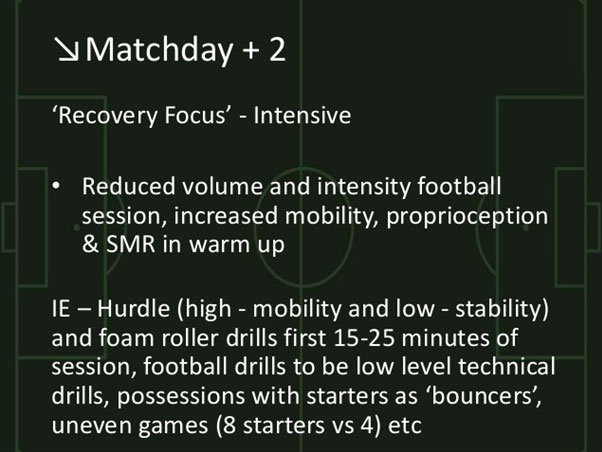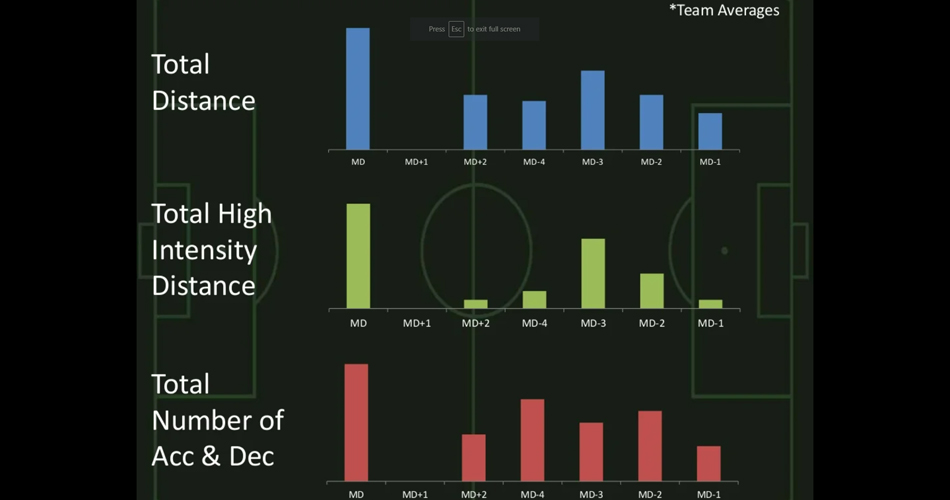Planning The In-season Microcycle In Soccer Part 9: Revisiting ‘Physical Themes Derived From Tactical Periodisation’
Hamish’s presentation from 2016 showed how he approach microcycle planning in soccer, taking into account match days and tactical periodization. Now, two years later, I’ve asked Hamish if he would like to update his presentation with the recent developments and changes. What follows are the updates of the Hamish’s microcycle model in soccer.
As with the original series, the aim is to start the discussion and sharing between coaches working in teams sports. If you have anything to add, comment or present, please be free to contact us anytime.
Revisiting ‘Physical Themes Derived from Tactical Periodisation’ by Hamish Munro
Reflection has often (but by no means always) been overlooked and underutilised within the strength and conditioning, sport science and performance enhancement arena. When reflecting back on the presentation I published on our 2015/2016 in-season setup, many things have changed while many haven’t – as is the way in performance enhancement. The designing and implementation of efficient systems housed within (to steal Mladen’s terminology) Agile capabilities is key to creating stable platforms and fresh athletes to go and perform.
Like many, I am still starting with a tactical periodisation type setup and building out a hybrid model, realistically everyone should be building a framework to suit their own needs. I am still of the opinion that designing mesocycles or even macrocycles in football can be ambitious, these should be an amalgamation of various microcycles designed to slot in depending on the requirements for a given point in the season. Something that has become abundantly clear is the need to identify the three stages of any week: Recovery, Adaptation and Tapering (see Weekly Plans and Planning In-Season Microcycle article series). Blocked out days/series of days with versatility to shift load up or down based on the array of gathered information.
Potential framework’s for mini blocks aimed at starter’s during one and two game in season weeks

Recovery Focus MD+1 and MD+2
The MD+1 vs MD+2 recovery debate will often come down to where coach’s loyalties lay, a MD+1 recovery session to maximise physiological recovery or a MD+2 recovery session to maximise psychological recovery. When undertaking a MD+1 recovery session you know 100% the guys will not have recovered, therefore it arguably serves its purpose. The MD+2 session however will give guys a chance (albeit a slim one) of taking part within some capacity in the team training session. On a reduced basis then there is still the potential for guys to (in some way) take part in the learning process of a training session, the debate as to if guys are ready to consume that information is another segway for the debate.


Commonly seen pre-training recovery measures can provide great insights into a player’s ‘status’. However, like with many strands of sports technologies, are we measuring what we are measuring because we can measure them, or because these are truly powerful sources of data? Physiological and Neurological recovery in football is of course of the upmost importance – but is it the key driver of football performance? Cognitive performance and processing is arguably the driving factor behind successful and unsuccessful performance, is there a way we could better assess that aspect of performance recovery? Virtual reality is certainly an exciting space in this regard and one to watch! Whilst pre-training neurological and physiological testing is still a focal point, things like submaximal yoyo and/or a variation of a run using accelerometery data from the GPS units can provide in-training feedback for future decision making without extra hassle.
Adaptive Focus MD-4 and MD-3
The adaptive days speak for themselves, keep additional stress as far away from games as possible taking into account the r’s, namely: residuals, recoveries and robustness. The on-field and off-field strength hits (albeit micro dosing supplementary gym work around them) are a common occurrence within clubs in season who aim to provide healthy, aggressive, fast, strong and tolerant players. The ‘exposure’ to higher running speeds…











Responses